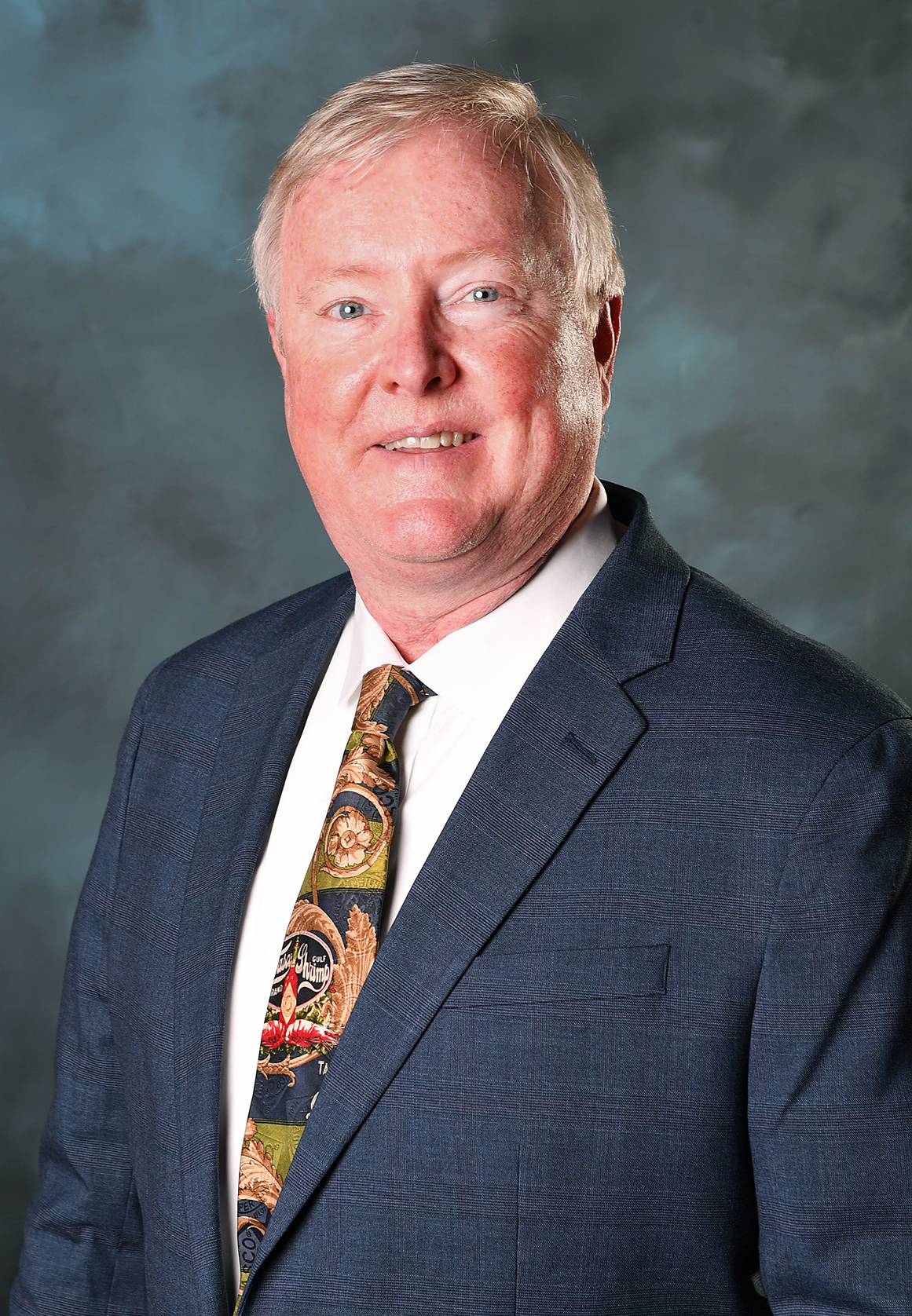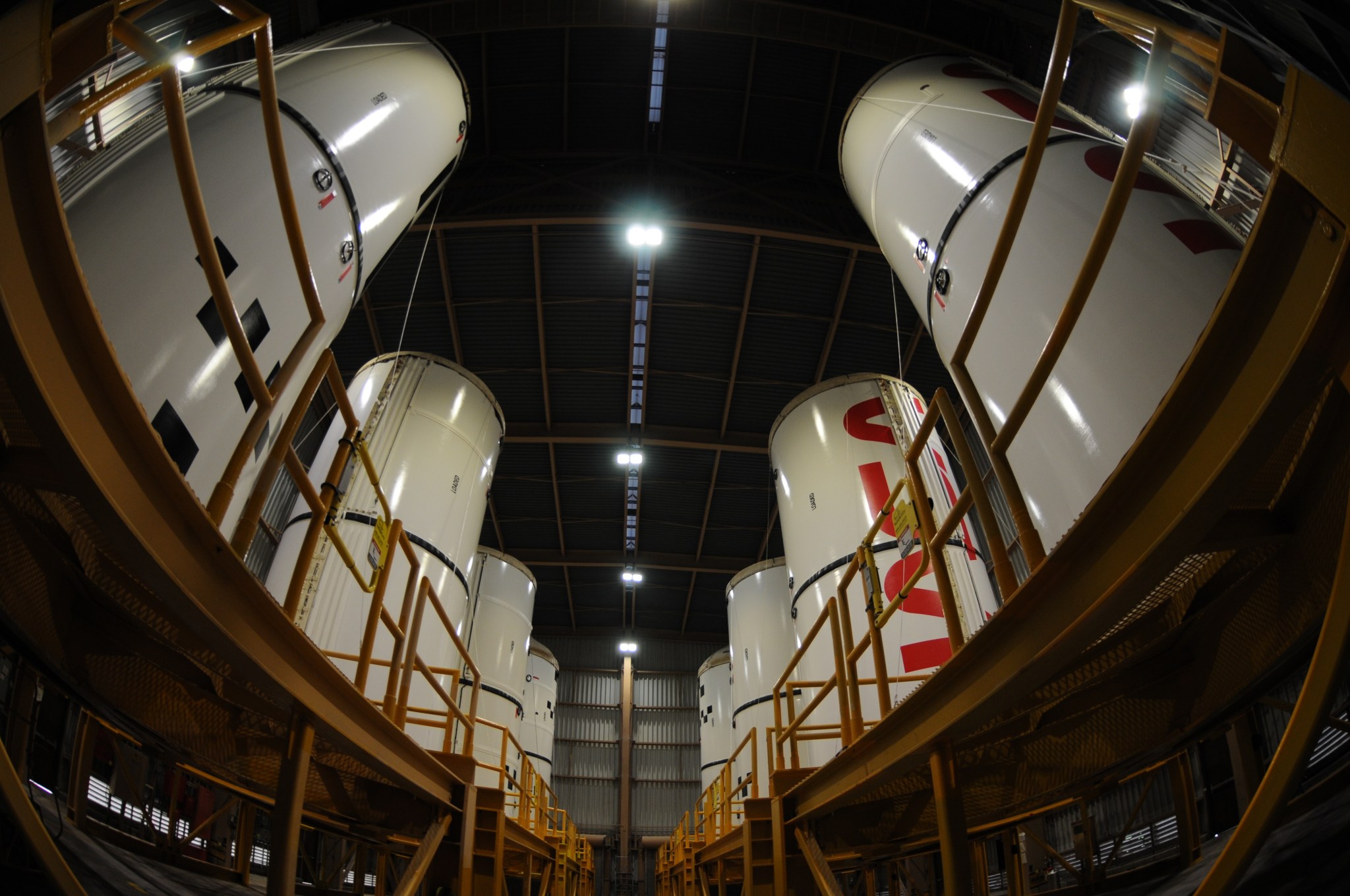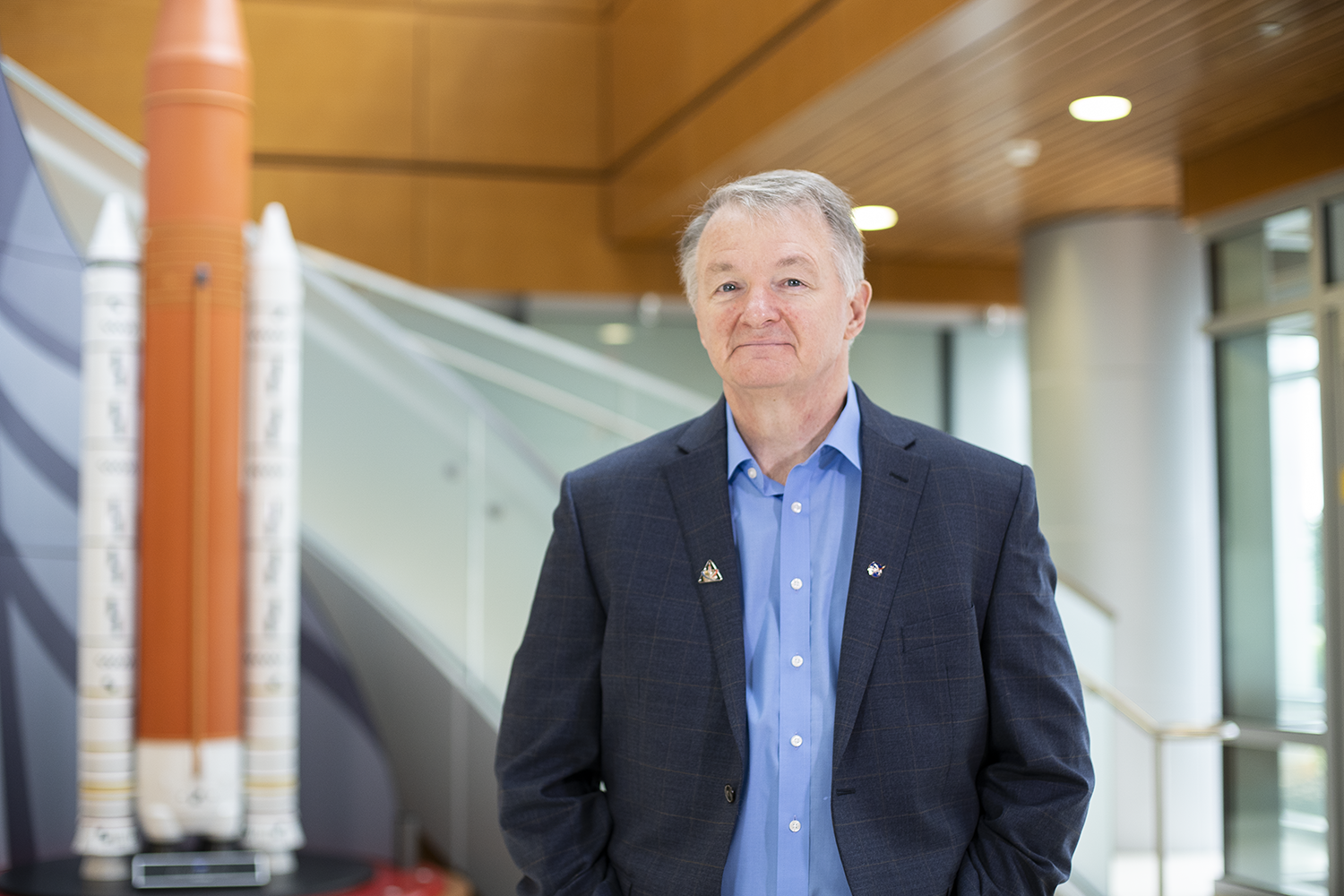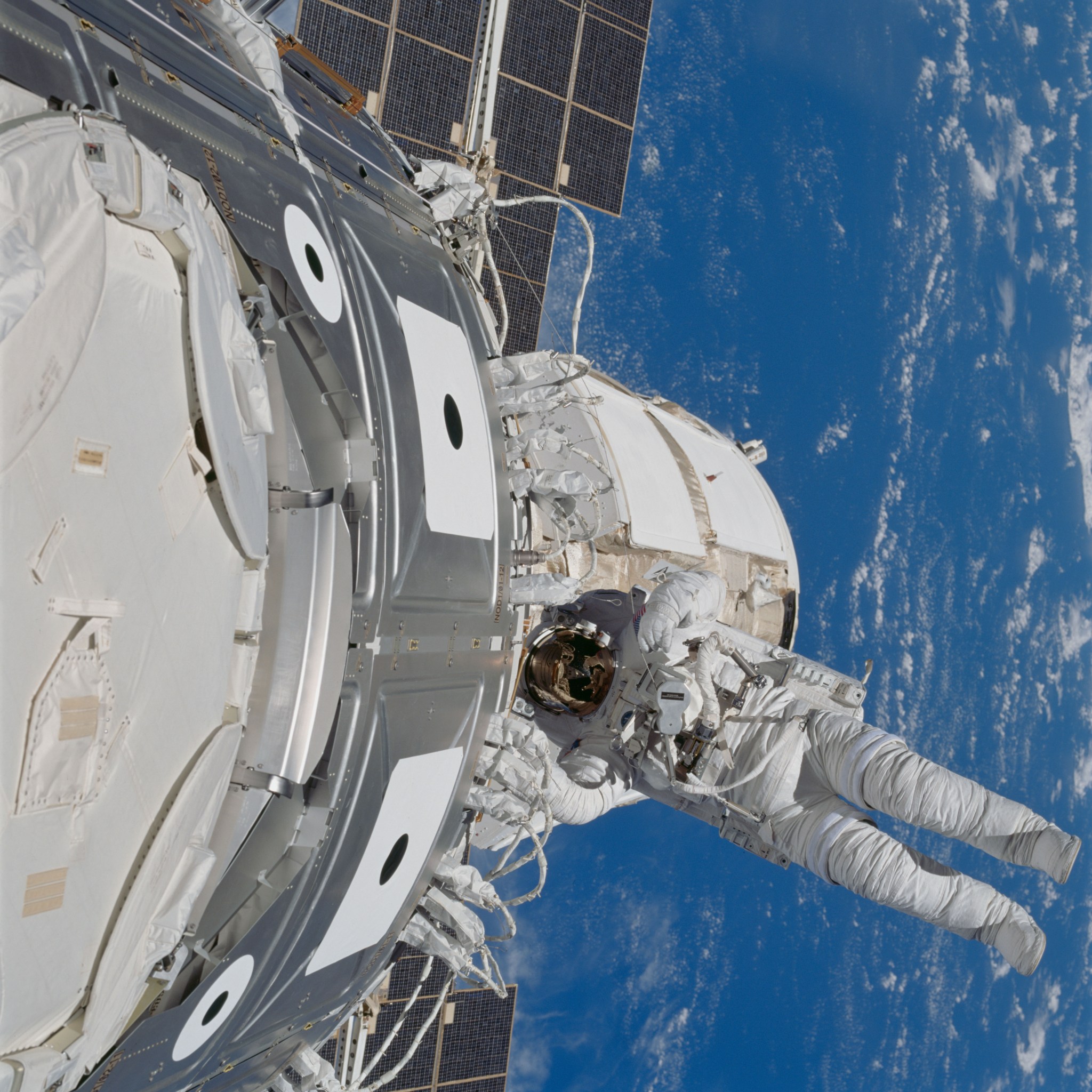In This Week’s Star
- Keith Brock Named Deputy Director of Michoud Assembly Facility
- NASA Lines Up Artemis I Rocket Booster Motors for Stacking
- Johnny Heflin Gets Fired Up Over NASA Career
- Data Sonification: A New Cosmic Triad of Sound
- NASA’s Break the Ice Lunar Challenge Opens, Highlighted on ‘This Week @NASA’
- This Week in NASA History: STS-88 Launches with Unity Node – Dec. 4, 1998
Keith Brock Named Deputy Director of Michoud Assembly Facility

Keith Brock has been named deputy director of NASA’s Michoud Assembly Facility.
Brock is responsible for the day-to-day management of the multitenant manufacturing facility, where NASA’s Space Launch System and Orion spacecraft are being built. SLS, the world’s most powerful rocket, will carry astronauts in the Orion crew vehicle, science experiments, and cargo on deep-space missions, including journeys to the Moon and Mars.
He succeeds Roslin Hicks, who died earlier this year.
Brock was most recently manager for NASA’s Marshall Space Flight Center’s Safety and Mission Assurance Office, where he supervised and led a team of chief safety officers, systems safety and quality engineers, and assessment and audit personnel,
Starting in 1989, Brock spent much of his early career at NASA’s Stennis Space Center, where he focused on the space shuttle. As a systems engineer, he supported shuttle main engine testing and later moved to NASA’s Kennedy Space Center, where he supported shuttle launches. In 1999, he returned to Stennis to work in the Rocket Propulsion Test Program Office for six years, including a period as acting manager.
Brock returned to his shuttle roots in 2005, but this time in the propulsion office at Marshall, where he later took a lead role as the deputy project manager of the Altair Project Office, a Constellation-era project to develop a lunar lander to return humans to the Moon and provide life support and a base for week-long surface exploration missions.
Returning to Stennis from 2009 to 2018, Brock served in several key leadership positions, including project director for rocket propulsion testing and Earth applied science projects, chairman of the Source Evaluation Board for the Synergy-Achieving Consolidated Operations and Maintenance contract, and Center Operations director. He also performed a detail leading the Agency Applications Office within the Chief Information Office at Marshall.
A native of Tylertown, Mississippi, Brock received a bachelor’s degree in mechanical engineering from Mississippi State University in Starkville. He and his wife, Lue, live in Huntsville. They have three children and two grandchildren.
NASA Lines Up Artemis I Rocket Booster Motors for Stacking

Eight rocket motor segments for the first flight of NASA’s Space Launch System are lined up in preparation for stacking at NASA’s Kennedy Space Center. As each segment completed processing, workers moved them to the surge bay at Kennedy’s Rotation, Processing, and Surge Facility. Each of the fully assembled, 177-foot-tall solid rocket boosters on SLS produce more than 3.6 million pounds of thrust and together provide more than 75% of the total thrust during the first two minutes of launch and flight. The booster segments will help power the first mission of NASA’s Artemis program with the SLS rocket. NASA’s Exploration Ground Systems team transported the motor segments to the Vehicle Assembly Building, and will use a crane to lift the booster segments and stack them one by one on the mobile launcher. The bottom section of the boosters, known as the aft assemblies, were completed in November and moved to the Vehicle Assembly Building with the first of the two pieces being placed on the mobile launcher Nov. 21. The boosters are the first elements of SLS to be installed on the mobile launcher ahead of the Artemis I launch. After booster stacking is complete, the core stage, which is undergoing final Green Run testing at NASA’s Stennis Space Center, will be delivered to Kennedy and moved to the Vehicle Assembly Building to continue rocket construction. (NASA)
Johnny Heflin Gets Fired Up Over NASA Career
By Ramon Osorio

Johnny Heflin recently celebrated his 30th anniversary working with NASA. Heflin, Space Launch System liquid engines manager at Marshall Space Flight Center, oversees a team developing and testing the RS-25 and RL10 engines that will provide the power to send astronauts to the Moon on future Artemis missions.
“My team will deliver high-performance engines to safely fly humans to the Moon,” Heflin said. “We take both the launch and in-space engines that power the Space Launch System rocket from design and manufacturing, through testing and flight to the Moon.”
What inspired this small-town boy from just outside Decatur, Alabama, to become an aerospace engineer? For Heflin, it was a journey shaped by inspiration, hard work, and a lucky break.
“I was not one of those kids who grew up knowing what they wanted to do in life,” he said. “There was no 12-step plan on how I was going to achieve my ultimate dream job, and there was never that one thing that I felt I was born to do,” Heflin said.
After graduating from West Morgan High School, Heflin worked in various jobs, including construction, before realizing he wanted something different.
“I enjoyed seeing the results of hard work, but I knew it was not my forever job,” he said.
Heflin remembers his mother, who he describes as his biggest mentor in life, working a long day on an assembly line at the Huntsville Chrysler factory and then coming home to make dinner and care for her four children.
“That’s when I heard her speak admirably about the engineers there at Chrysler,” he said. “So, I pursued electrical engineering solely based on the impression I had formed listening to her talk about it.”
Inspired by his mother’s talks and strong work ethic, Heflin attended an electrical engineering workshop during a career day at the University of Alabama in Huntsville. While studying there, Heflin received what he describes as a lucky phone call that allowed him to join Marshall through the cooperative education program.
After graduating with a degree in electrical engineering in 1992, Heflin began a full-time position at Marshall.
He began his career in the rocket propulsion test lab where he tested rocket engines and components that powered the space shuttle, a job he described as an extraordinary opportunity for young engineers.
In addition to testing rocket engines that put humans in space, he learned a lot about the profession and worked with mentors who later called upon him for greater roles on the shuttle program. He eventually worked as the shuttle main engine avionics manager and team lead of the design engineering office.
One of Heflin’s fondest memories from the shuttle program was during a nighttime launch at NASA’s Kennedy Space Center.
“I watched the astronauts drive away in a van to board the shuttle and as they disappeared in the darkness that’s when it hit me that I had a huge role in building and managing the engines that would fly that crew to space and return them back home to their families,” Heflin said.
In 2011, when the shuttle program ended, Heflin joined the SLS liquid engine office he now leads. Under his direction, the former RS-25 shuttle engines have been adapted and tested to fly on the shuttle’s successor, the SLS.
Along with testing the modified RS-25s and RL10s, Heflin’s team is focused on one of the most important SLS milestones to date: the Green Run testing that will verify the rocket’s design and propulsion systems, including the first four RS-25 engines to fly the SLS on its first lunar mission.
“After this final hot fire test, we’re one step closer to returning America back to the lunar surface,” Heflin said. “I’m humbled to be on a team that made this possible. Being part of putting a NASA rocket back in space, will be an absolute pinnacle in my career.”
Osorio is a public affairs officer in Marshall’s Office of Strategic Analysis & Communications.
Data Sonification: A New Cosmic Triad of Sound
A new trio of examples of “data sonification” from NASA missions provides a new method to enjoy an arrangement of cosmic objects. Data sonification translates information collected by various NASA missions — such as the Chandra X-ray Observatory, Hubble Space Telescope, and Spitzer Space Telescope — into sounds.
An image of the Bullet Cluster – officially known as 1E 0657-56 – provided the first direct proof of the mysterious unseen substance that makes up the vast majority of matter in the universe, called dark matter. X-rays from Chandra (pink) show where the hot gas in two merging galaxy clusters has been wrenched away from dark matter, seen through a process known as “gravitational lensing” in data from Hubble (blue) and ground-based telescopes. In converting this into sound, the data pans left to right, and each layer of data was limited to a specific frequency range. Data showing dark matter are represented by the lowest frequencies, while X-rays are assigned to the highest frequencies. The galaxies in the image revealed by Hubble data, many of which are in the cluster, are in midrange frequencies. Then, within each layer, the pitch is set to increase from the bottom of the image to the top so that objects toward the top produce higher tones.
The Crab Nebula has been studied since it first appeared in Earth’s sky in A.D. 1054. Modern telescopes have captured its enduring engine powered by a quickly spinning neutron star that formed when a massive star collapsed. The combination of rapid rotation and a strong magnetic field generates jets of matter and antimatter flowing away from its poles, and winds outward from its equator. For the translation of these data into sound, which also pans left to right, each wavelength of light has been paired with a different family of instruments. X-rays from Chandra (blue and white) are brass, optical light data from Hubble (purple) are strings, and infrared data from Spitzer (pink) can be heard in the woodwinds. In each case, light received toward the top of the image is played as higher pitched notes and brighter light is played louder.
On Feb. 24, 1987, observers in the Southern Hemisphere saw a new object in the Large Magellanic Cloud, a small satellite galaxy of the Milky Way. This was one of the brightest supernova explosions in centuries and soon became known as Supernova 1987A, or SN 87A. A time lapse shows a series of Chandra (blue) and Hubble (orange and red) observations taken between 1999 and 2013. This shows a dense ring of gas – which was ejected by the star before it went supernova – begin to glow brighter as the supernova shockwave passes through. As the focus sweeps around the image, the data are converted into the sound of a crystal singing bowl, with brighter light being heard as higher and louder notes. The optical data are converted to a higher range of notes than the X-ray data so both wavelengths of light can be heard simultaneously. An interactive version lets the user play this astronomical instrument for themselves.
The data sonification project is led by the Chandra X-ray Center as part of the NASA’s Universe of Learning program. NASA’s Science Activation program enables NASA science experts and incorporates NASA science content into the learning environment effectively and efficiently for learners of all ages. The collaboration was driven by Chandra X-ray Center visualization scientist Kimberly Arcand, astrophysicist Matt Russo, and musician Andrew Santaguida – both of the SYSTEMS Sound project.
NASA’s Marshall Space Flight Center manages the Chandra program. The Smithsonian Astrophysical Observatory’s Chandra X-ray Center controls science from Cambridge, Massachusetts, and flight operations from Burlington, Massachusetts. NASA’s Universe of Learning materials are based upon work supported by NASA under cooperative agreement award number NNX16AC65A to the Space Telescope Science Institute in Baltimore, Maryland, working in partnership with the Infrared Processing and Analysis Center at the California Institute of Technology in Pasadena; Center for Astrophysics | Harvard & Smithsonian in Cambridge; NASA’s Jet Propulsion Laboratory; and Sonoma State University in Rohnert Park, California.
Read more about Chandra here. For more Chandra images, multimedia and related materials, visit here.
NASA’s Break the Ice Lunar Challenge Opens, Highlighted on ‘This Week @NASA’
NASA’s Break the Ice Lunar Challenge – a new competition in the agency’s Centennial Challenges Program – has opened registration and is featured in “This Week @NASA,” a weekly video program broadcast on NASA-TV and posted online.
The Break the Ice Lunar Challenge is looking for ideas for new technologies to excavate the Moon’s icy regolith, or dirt, and deliver it to a hypothetical processing plant at the lunar South Pole. Such a system could support a sustained human presence on the Moon by the end of the decade. The two-phase competition offers up to $5 million in prize money between both phases. For more details, visit here.
NASA’s Marshall Space Flight Center manages the Centennial Challenge Program for the agency. The Break the Ice Lunar Challenge is the first Centennial Challenge to be led by Marshall, along with support from NASA’s Kennedy Space Center.
View this and previous episodes at “This Week @NASA” on NASA’s YouTube page.
This Week in NASA History: STS-88 Launches with Unity Node – Dec. 4, 1998

This week in 1998, space shuttle Endeavour, mission STS-88, launched from NASA’s Kennedy Space Center on the first International Space Station assembly mission. Endeavour carried the Unity connecting module – the first space station piece provided by the United States – and two pressurized mating adapters. On Dec. 6, the STS-88 crew captured the Russian Zarya module, launched Nov. 20, and mated it with the Unity node. Scientists and engineers at NASA’s Marshall Space Flight Center led the development of four systems supporting science operations and investigations aboard the station, including the ExPRESS racks, the Microgravity Science Glovebox, the Materials Science Research Rack, and the Windows Observational Research Facility. Here, astronaut James Newman works on wrap-up tasks during the final of three spacewalks performed by the STS-88 crew during its 11-day mission. Today, the Payload Operations Integration Center at Marshall serves as “science central” for the space station, working 24/7, 365 days a year in support of the orbiting laboratory’s science experiments. After 20 years of continuous human presence, the space station remains the sole space-based proving ground and stepping stone toward achieving the goals of the Artemis program. The NASA History Program is responsible for generating, disseminating, and preserving NASA’s remarkable history and providing a comprehensive understanding of the institutional, cultural, social, political, economic, technological, and scientific aspects of NASA’s activities in aeronautics and space. For more pictures like this one and to connect to NASA’s history, visit the Marshall History Program’s webpage. (NASA)

























